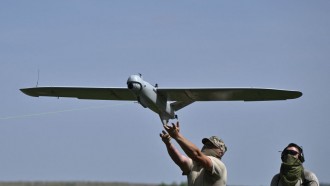The danger of seasonal forest fires is growing as average world temperatures rise year after year. Wildfire season causes enormous damage to woods and rural villages, destroying farmlands and infrastructure.
Even in places hundreds or thousands of kilometers distant, air quality plummets due to these fires.
The global climate crisis is indeed getting worse.
Response to Climate Crisis
Government organizations are using Earth observation satellites to keep tabs on wildfires and stop them before they get out of hand. Entrepreneurs are using new technology, such as artificial intelligence (AI), to forecast outbreaks.
One such startup is Metaspectral, according to Interesting Engineering.
It is a Vancouver-based software development firm that has developed a platform for the real-time AI analysis of hyperspectral satellite data.
It allows the system to identify high-risk locations and prepare for probable forest fires. Thus, firefighters and government officials can concentrate on the most hit areas, preventing further spread.
The technique will be used on the International Space Station (ISS). The Canadian Space Agency (CSA) is also using it to analyze hyperspectral picture data gathered by the ISS and Earth observation satellites in Low Earth Orbit (LEO).
Related Story: Europe Launches New Weather Satellite to Track Unpredictable Events Amid Climate Crisis
Utilizing Thermal Sensors
NASA and CSA have used Earth Observation Satellites (EOS) with infrared sensors to monitor wildfires for decades.
Metaspectral co-founder and CEO Francis Doumet explained that the Earth Observation could examine places that are currently burning and those that are prone to flames. Remote sensing technology using "hyperspectral" sensors can evaluate whole areas to measure "fuel" on the ground, including dry or dead trees and plants.
"Hyperspectral" photography takes and interprets information from throughout the electromagnetic spectrum (in over 300 bands), unlike ordinary thermal cameras.
In astronomy, this approach is called integral field spectroscopy and is employed by two main instruments on the Very Large Telescope (VLT) in Chile, as well as NASA's Chandra X-ray Observatory's Advanced CCD Imaging Spectrometer (ACIS).
Analyzing With Data Compression Tech and AI
Data from over 300 spectral bands demands complex processing.
Metaspectral's innovative technique comes in by combining data compression technologies with machine learning models. The Metaspectral Fusion system is a unified framework for processing and dissecting hyperspectral data in real time.
Agents doing Machine Learning Operations (MLOps) keep tabs on and enhance the AI models that perform inference (or predictions) at the network's periphery (or in the Cloud) in perfect sync.
Doumet stated that Hyperspectral photos create gigabits per second of data.
He added that Metaspectral's patented compression and deep learning algorithms enable pixel-by-pixel analysis in real-time. By providing access to live data, the platform enables companies, agencies, and other users to get insights in seconds instead of days.
This permits high-risk locations to be recognized based on their spectral characteristics, assessing healthy versus dead trees and grass. Users may then estimate forest fire fuel and apply resources or mitigation activities.
"In the areas of climate change, hyperspectral data from space will allow farmers to precisely track plant health and soil moisture to only use the exact amount of fertilizer and water required to maximize yield. It will also allow farmers to precisely measure the carbon sequestration capacity of their fields," Doumet remarked.









